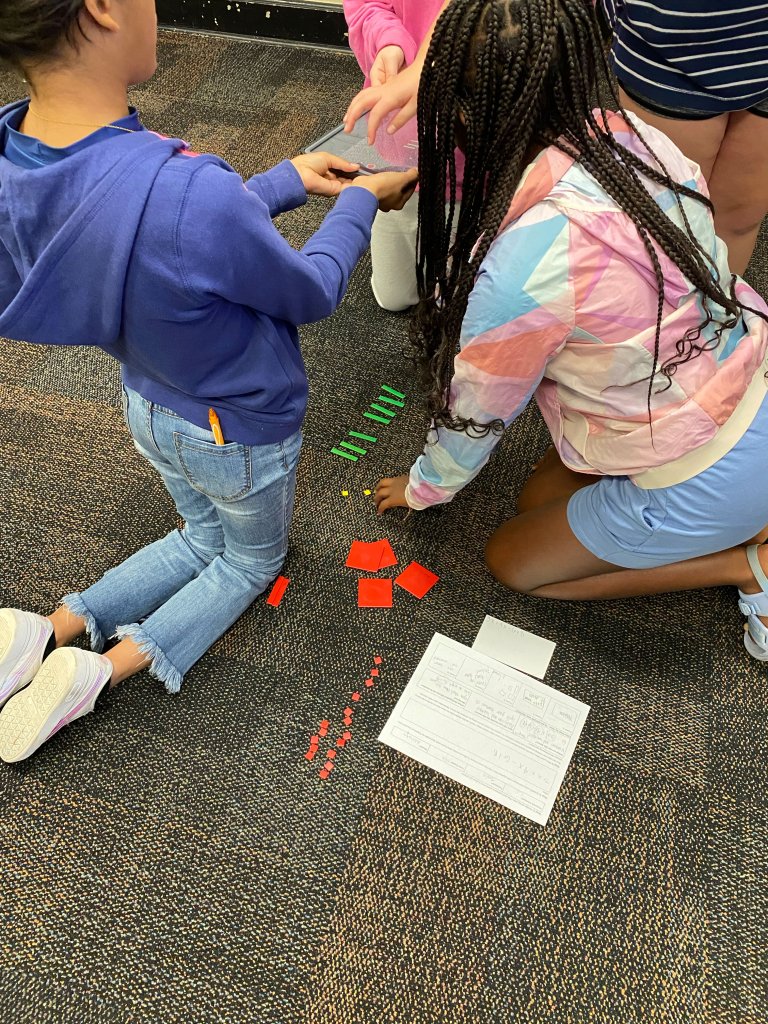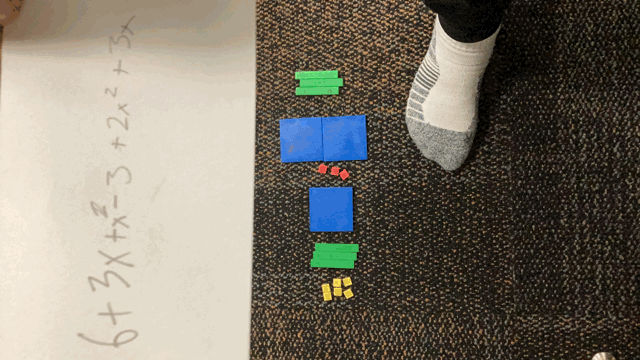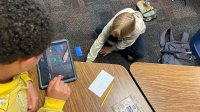Offering Hands-On Learning Experiences in Middle School Math
A project using algebra tiles and stop-motion video can make a typical lesson on combining like terms more engaging.
It’s important to include hands-on, multisensory learning experiences in the math classroom to increase depths of knowledge and engagement. As mathematical content becomes increasingly abstract at the middle school level, providing students with concrete representations of the processes taking place is necessary.
Teachers can choose from many strategies to facilitate critical thinking with their students. For this lesson we wanted to explore how manipulatives and technology integration, specifically algebra tiles and stop-motion video, can foster multisensory learning opportunities and engagement in math classrooms.
Hands-on, Multisensory Learning
Given the benefits of both physical manipulatives and video creation in math courses, we chose to incorporate algebra tiles and stop-motion videos to facilitate a learning activity that would actively engage middle school students in using their critical thinking skills in conjunction with creativity. In doing so, we were able to create an engaging setting for students to practice their mathematical skills alongside necessary 21st-century skills: communication, collaboration, critical thinking, and creativity.
Research has demonstrated that the use of physical manipulatives, like algebra tiles, to represent equations and expressions can increase mathematical achievement and support mathematical visualization of problem-solving. Concrete representations and manipulatives scaffold abstract mathematical concepts, including combining like terms, for middle school students.
As teachers are looking to incorporate more inclusive practices, video creation can be a powerful tool to support the learning of all students. Student-driven video creation in mathematics has been shown to increase mathematical achievement and contribute to lower levels of math anxiety among learners. Increasing engagement and decreasing barriers for mathematical understanding supports the use of video creation, including stop-motion video, in the math classroom.
The Lesson
For this two-day lesson, students worked collaboratively in small groups to combine like terms and simplify a provided algebraic expression. After learning how to use algebra tiles, working through the planning process, and simplifying their expression, students are tasked with demonstrating combining like terms to simplify an algebraic expression using algebra tiles and stop-motion video.
Day One: The first day was dedicated to teaching students how to use the algebra tiles to represent a given expression. We used an inquiry process driven by curiosity and questioning to activate students’ prior knowledge and practice using the algebra tiles to represent algebraic expressions and then challenged them to rearrange the tiles to simplify the expression.
Students worked first independently and then with a partner to check their work. This provided all students the opportunity to process the task and led to conversations among students about how they represented, and then simplified, each teacher-provided expression.
At the end of day one, we showed students this video to demonstrate how to use Stop Motion Studio to create their “combining like terms” stop-motion videos. Faith also created a model video to demonstrate to students how their final product might look. This served as a hook for day two and sparked conversations regarding slowly moving objects in the stop-motion videos. Students returned to class the following day excited to create their stop-motion videos.

Day Two: The students were placed in groups of three or four and given expanded expressions, a set of algebra tiles, and a planning document. This graphic organizer was designed to scaffold students’ problem-solving and encourage them to develop a clear plan of action for their videos before being given an iPad to record their stop motion.
After students completed the planning document collaboratively and simplified their expression with algebra tiles, they were given an iPad to demonstrate the simplifying process using Stop Motion Studio.
Students took creative approaches to recording their stop-motion videos. For example, one group animated in scissors when they simplified their expression to “cut away” the algebra tiles they no longer needed in the frame. This project also required students to delegate tasks, problem-solve, and work together to create a smooth animation with minor movements between frames. We then exported students’ completed videos as animated GIFs that would play in a loop.
Because of students’ high motivation and engagement, most groups were able to complete their planning documents and film complete stop-motion videos during one 50-minute class period. At the end of day two, students independently reflected on their learning using Flip.

Student and Teacher Reflections
Students were asked to respond to three questions on Flip:
- How did using algebra tiles help you combine like terms?
- What went well?
- What do you need more help with?
As expected, many students cited the visual and hands-on nature of algebra tiles supporting their learning and understanding of combining like terms. For example, one student said, “Algebra tiles helped me because they showed me to combine by the shape and take away because of the color.” Another student shared that algebra tiles “helped me because I could visualize things and move it to focus more.”
In their Flip reflections, students also commented on the engagement value added by the stop-motion-video portion of the lesson. One student said, “Stop motion helped show how to simplify,” while another shared, “Stop motion made the activity more fun.”
Additionally, making the stop-motion videos encouraged groups to collaborate effectively. One student mentioned that her group was able to use the creation of the stop-motion video as a way to share responsibilities. After completing their video, her group rewatched the video together to reflect on their work.
Looking in from the outside, it was clear that the use of algebra tiles and stop-motion videos supported students’ engagement and comprehension. There was a sense of excitement in the room as students were working, including those who might not typically enjoy math. In response to the Flip questions, one struggling student said, “I loved doing this and want to do more.”
